You can definitely call this small piano portable, as in “transportable.” With 73 semi-weighted keys, the Thomann SP-120 is compact and light. It’s great for traveling, and the sound quality is impressive for less than $200! Where’s the catch?
Pros and Cons
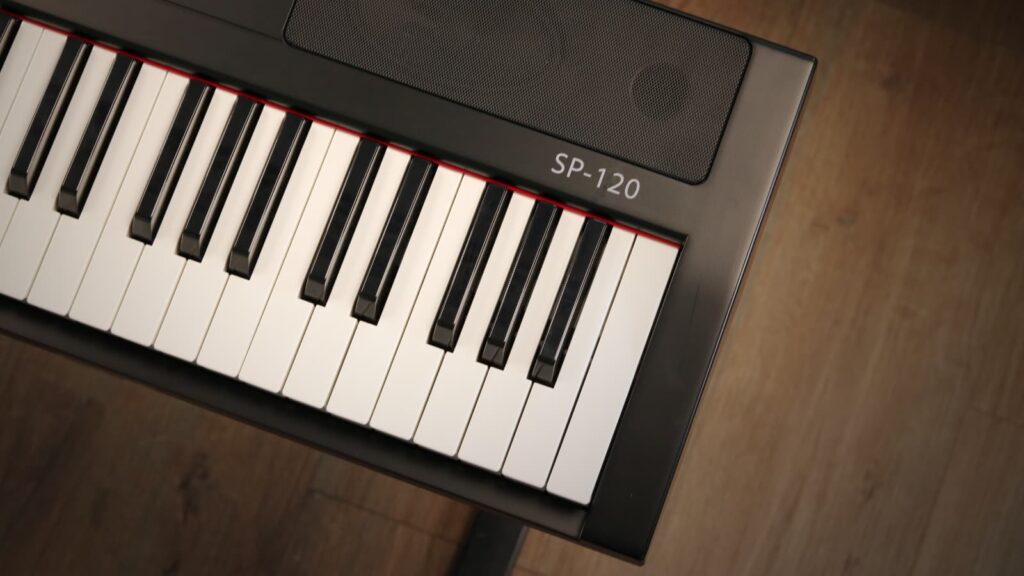
You can definitely call this small piano portable, as in “transportable.” With 73 semi-weighted keys, the Thomann SP-120 is compact and light. It’s great for traveling, and the sound quality is impressive for less than $200! Where’s the catch?
For some time now, many portable and stage pianos have achieved a lower weight by switching from a solid metal to a lightweight plastic chassis. The keyboard and built-in speakers now account for most of the total weight. There’s no question: Hammer-action keyboards make portable pianos heavy. It’s difficult to reduce the weight any further without compromising the sound and feel. However, the SP-120 strikes a good balance.
The Thomann SP-120 combines a compact plastic design with a lightly weighted keyboard, yet it is equipped with a powerful speaker system. The speakers, which emit sound upwards, produce a voluminous sound.
And well done! When playing, you get great sound from the 2×20-watt playback system. It remains clean even at full volume, so you won’t even need an additional keyboard amplifier for an unplugged rehearsal.
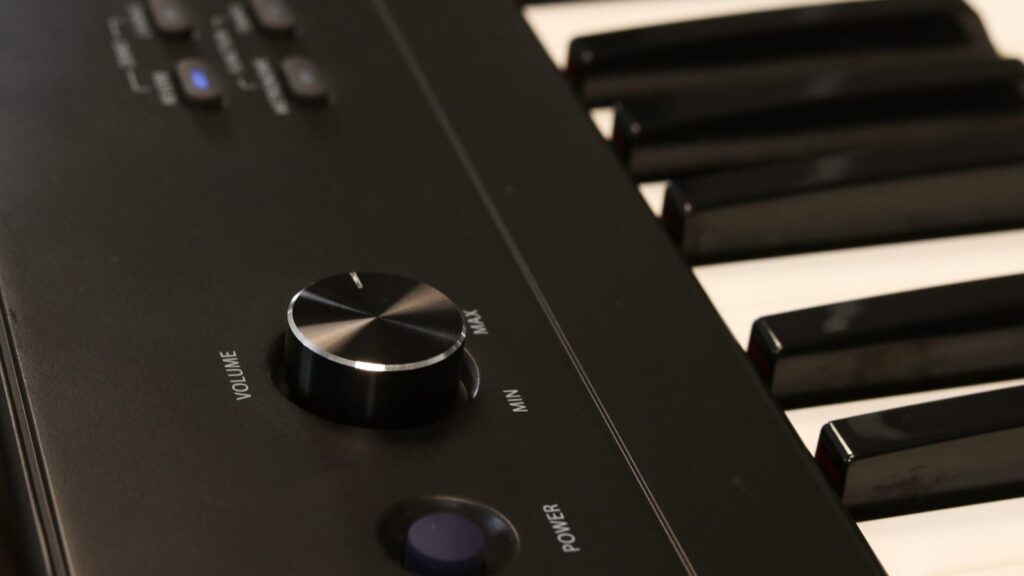
Although a simple foot switch is included for the sustain function, a decent sustain pedal would be much better. However, this is also related to its total weight of 6.2 kg. We recommend the inexpensive Lead Foot pedal with switchable polarity as an optional add-on.

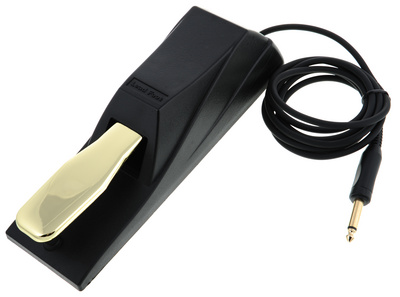
For playing off the grid, the Thomann SP-120 is equipped with a battery compartment. The little flap on the bottom does not suggest that it’s actually six large LR20 batteries wanting to be stowed here.
The battery format seems a bit unusual at first because, actually, all comparable mobile instruments use much smaller AA batteries. However, the larger batteries here are probably needed due to the 2×20-watt speaker system. As you can fully enjoy the sound of the speakers even in battery mode, that’s a real advantage. The weight of the SP-120 increases with the six batteries, but it remains portable.
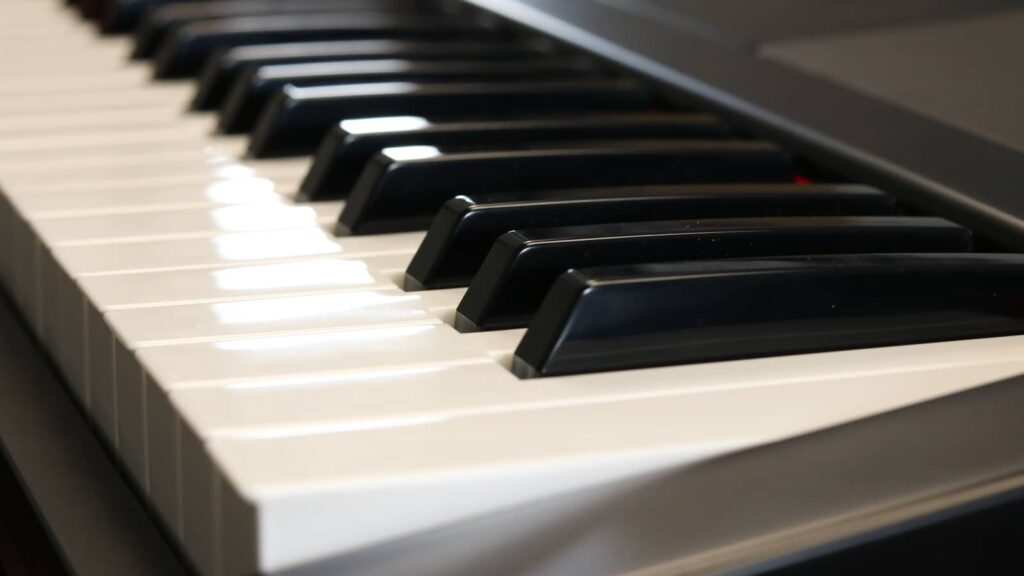
Semi-weighted means that the keyboard is not equipped with a weighted hammer action. In addition, with a length of just under 14cm, the keys are a bit shorter than on portable pianos with hammer action keyboards. Also, the keys of the SP-120 play quite loosely.
Clearly, the main focus here is on compact dimensions and low weight, so a compromise was made in terms of playing feel. Nevertheless, the Thomann SP-120 keyboard provides a pleasantly grippy feel, making it a good choice for various uses.
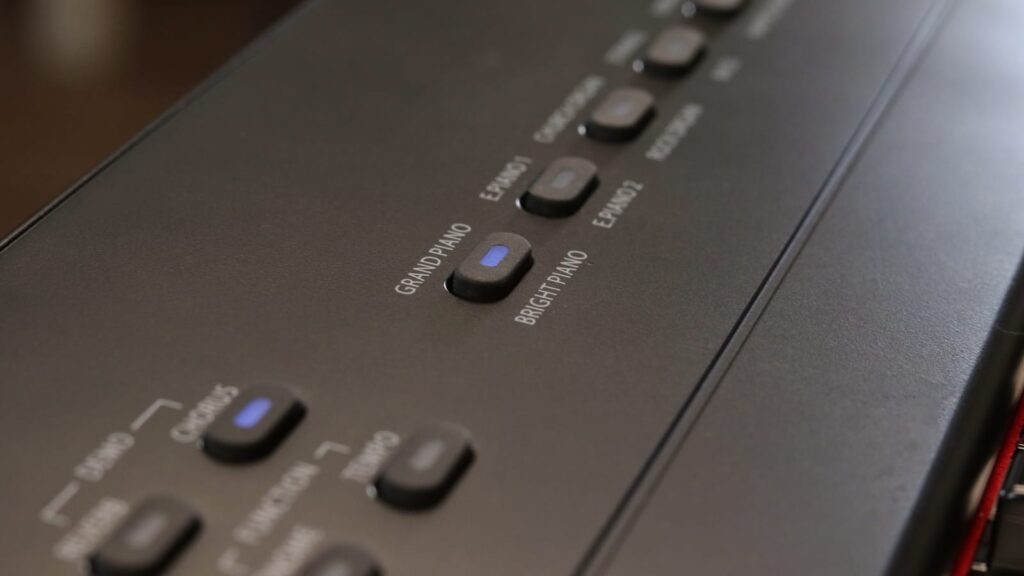
The built-in sounds are good for an entry-level piano. However, subtleties like string resonances and key-off effects are not as pronounced as those in more expensive portable pianos.
The quality of the grand piano definitely takes center stage. It sounds balanced and has a nice stereo image. While you can consider the other sounds accessories, they are fun to use in layer mode. As the name suggests, the Bright Piano is a brighter-sounding variant.
On the other hand, the 32-voice polyphony is a bit limited, especially when layering sounds. However, the Thomann SP-120 has something else up its sleeve that makes it an interesting instrument for sessions, especially for professionals: USB audio/MIDI!
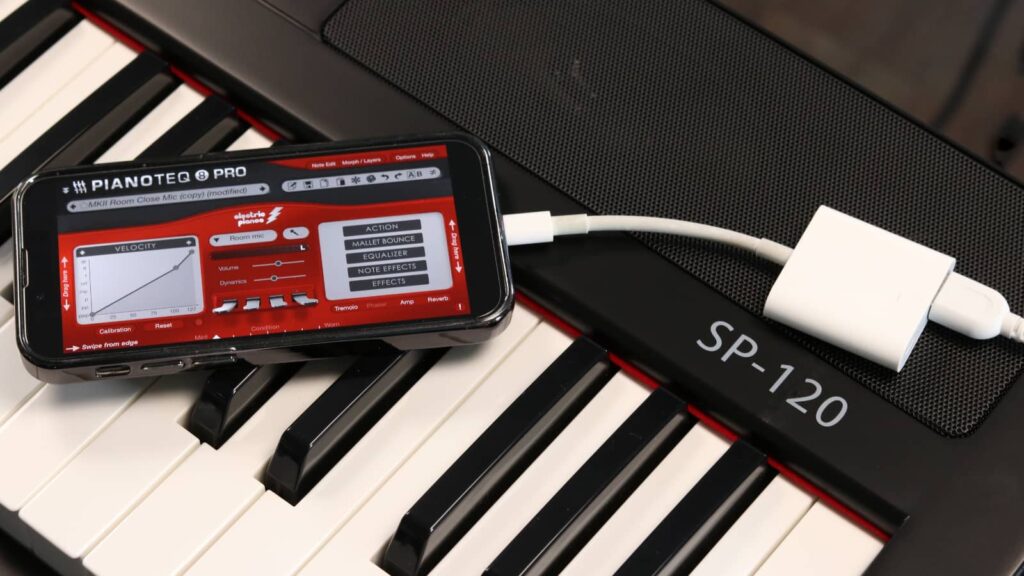
You wouldn’t expect that given the low price of the Thomann SP-120: A USB audio/MIDI function allows for the full integration with computers and mobile devices. Since the interface is class-compliant, no drivers are necessary to connect to a Mac or PC. It’s plug-and-play!
Beginners who want to get started with a piano learning app can easily connect their tablet or smartphone to the Thomann SP-120. This lets you listen to online lessons through the speaker system of the digital piano—alongside its built-in sounds, of course.
USB audio/MIDI is especially advantageous for live use with mobile devices: You can easily integrate apps like Modartt Pianoteq, Korg Module Pro, and Korg Gadget into the Thomann SP-120’s audio system. With such professional sounds, playing the SP-120 is a whole new experience.
Just keep an eye on the apps’ volume. Overloading the input sensitivity can overdrive the speakers or headphones. Ideally, the SP-120 would have volume control for USB audio, but given its low price, you can’t complain (just lower the volume in the app, and the problem is solved).
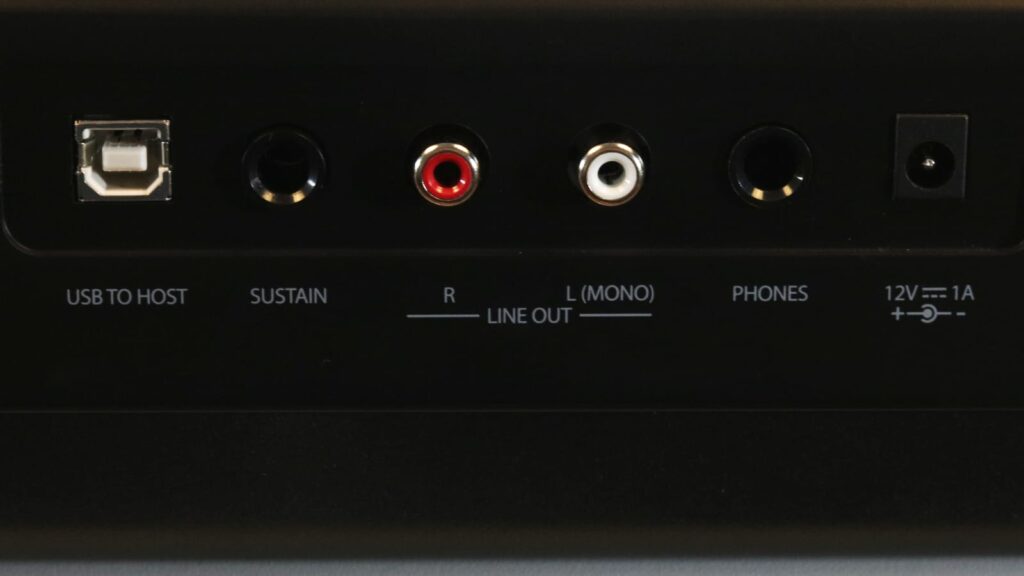
In addition to the power button and volume control, the control panel has buttons for selecting sounds and accessing the most important digital piano functions. These include reverb, chorus, metronome, and tempo. Since there is no display, you have to use the SP-120’s keyboard to set the metronome tempo. While this is somewhat awkward, it remains manageable.
Pressing the Metronome and Tempo buttons simultaneously activates the Function section. Again, the keyboard is used for input, so you’ll need the manual for details. In fact, the SP-120 comes with everything you would expect from a modern digital piano: transpose and tuning, as well as MIDI settings and velocity.
Additionally, there is an equalizer for bass and treble, as well as volume control for the main and layer parts and control of the reverb and chorus effect proportions. Although adjusting the keyboard is difficult, this little digital piano has a surprising amount of functionality.
The MIDI Local function is important when using USB audio/MIDI. It allows you to disconnect the keyboard from the internal sound generation. When Local OFF is activated, the SP-120 won’t emit any sound, but the speakers and sound generation will still be active. The only difference is that internal sounds can only be accessed externally, e.g., via DAW software. Similarly, external sounds from a piano app, online lessons, or DAW apps, such as Korg Gadget, play back through the Thomann SP-120’s speakers without sound duplication from the internal piano sound.
Digital pianos with semi-weighted keys for mobile use are particularly popular at the moment, so we’ve compared four instruments in this category with the Thomann SP-120. Among them, the SP-120 is by far the most affordable.
Thomann SP-120 vs. Yamaha NP-35: Yamaha has been present in this category for a while with its Piaggero models. The new NP-35 offers a graded semi-weighted keyboard, better sounds, and a USB audio/MIDI function. It is also the smallest digital piano compatible with Yamaha’s Smart Pianist app. However, the NP-35 is more than twice as expensive as the SP-120.
SP-120 vs. Korg Liano: The Korg Liano is a professional-level instrument not only in terms of sounds: It also has an 88-note keyboard with piano-style keys. Regarding the semi-weighted keyboard compromise, the Liano also has a better feel and key action than the competitors. Further, it supports USB audio/MIDI, which justifies its approximately twice-as-high price.
SP-120 vs. Casio CT-S1: With 61 keys, the Casio CT-S1 is more of a piano keyboard and, in this respect, even more compact than the SP-120. However, there is only USB MIDI here, but at least an audio input for external devices. There is also a Bluetooth function via the USB-to-Device port. The advantage of the SP-120 is the USB audio/MIDI function and the larger keyboard range.
SP-120 vs. Roland Go:Piano: When comparing the SP-120 to the Roland Go:Piano, one notices that the latter is already a bit outdated. A pioneer in this compact class, its 61-note range makes it more of a keyboard. It’d be therefore more adequate to compare it to the Casio CT-S1.
The small Thomann digital piano is a real sensation for the price. The only notable trade-off with the SP-120 is the smooth playing feel of its semi-weighted keyboard. However, this design choice keeps the weight down, making the SP-120 an ideal mini piano for travel.
Light, compact, and durable, the SP-120 isn’t just for beginners. Keyboard players of all levels will appreciate it as a portable stage piano for live sets, rehearsals, or even unplugged gigs with the band. It delivers a full, rich sound even when running on batteries. The built-in USB audio/MIDI interface makes it an extremely practical live keyboard when paired with a computer or mobile device. While the 32-note polyphony is somewhat limited, at this price point, it’s an absolute steal.

Release date: September 2020
Keyboard: 73 keys, semi-weighted
Polyphony: 32 voices
Special features: USB audio/MIDI
Manufacturer/Distributor: Thomann
*Affiliate link. These “advertising links” help us finance our website. If you buy a product through such a link, we receive a small commission – at no extra cost for you. The PIANOO.com team says thank you for your support!
Pros and Cons
The only notable trade-off with the SP-120 is the smooth playing feel of its semi-weighted keyboard. However, this design choice keeps the weight down, making the SP-120 an ideal mini piano for travel.

SP-120 : 159,00 €
TO THE OFFERYou are currently viewing a placeholder content from Facebook. To access the actual content, click the button below. Please note that doing so will share data with third-party providers.
More InformationYou are currently viewing a placeholder content from Instagram. To access the actual content, click the button below. Please note that doing so will share data with third-party providers.
More InformationYou are currently viewing a placeholder content from X. To access the actual content, click the button below. Please note that doing so will share data with third-party providers.
More Information